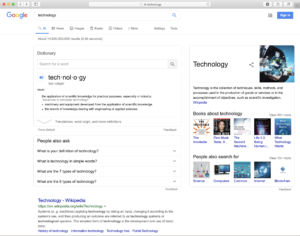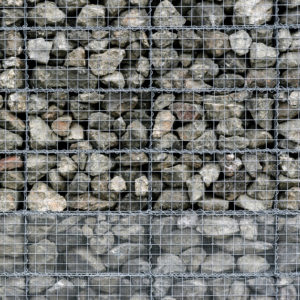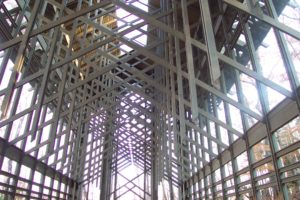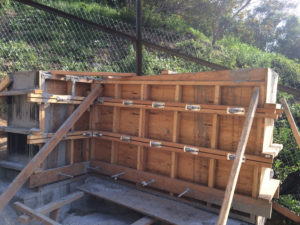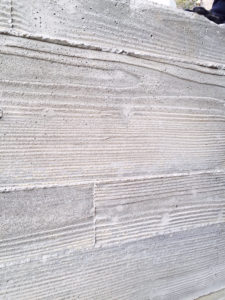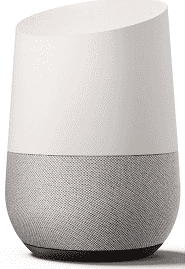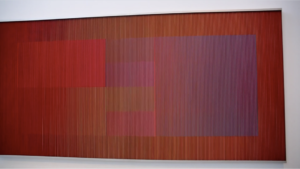Technology is the answer, but what was the question?
~Cedric Price
MILLS STUDIO’S STATEMENT
Purposeful architecture exploits technology as a means to achieve its architectural agenda. Technology is a means to achievement and not an end in itself. Technology makes both the project process and the physical building possible. The exploitation begins with how technology is used in the design creation and producing the necessary documentation and ends with how technology is used to execute the construction process and make the building known to the public. Apart from the design and construction processes technology provides the opportunities and choices for how to best achieve the architectural agenda. A building necessarily confronts macro issues, such as how technology both positively and negatively affects society, and micro issues, such as how technology affects a building’s design and operation. Seriously addressing both these macro and micro issues with intention is among the ways to both make significant architecture and architecture significant.
Technology is often narrowly thought of as the most current cutting edge device instead of its more expansive dictionary definition as “the branch of knowledge that deals with the creation and use of technical means and their interrelation with life, society, and the environment, drawing upon such subjects as industrial arts, engineering, applied science, and pure science.”
Significant architecture takes advantage of all the opportunities afforded by the most expansive definitions of technology. Included in an expansive definition of technology are the means that provide access to information, tools, and technologies. The modern world has not only developed innovative products and materials, processes for making and manufacturing, and applicable knowledge of both human nature and the natural world, but it has also made all of these available to individuals by employing the technologies of the day. It is as important that we have access to technologies as that they exist.


Although the most current innovations in products like solar panels, energy storage batteries, home automation, and glass are important to integrate into any current design these technologies mostly have to do with the operation and performance of a building. It is often older, even ancient, technologies that contribute more to the art of architecture. Elemental technologies such as rammed earth, gabions, concrete, and the cantilever are what give the best architecture its expressive power. Combining well tested with current technologies that both allow adjustment for future innovation is thus a method of relating architecture and life simultaneously to the past, present, and future.
mills studio’s attitude toward technology’s opportunities and possibilities in both society and architecture is shaped by commencing practice in California in the 1980’s when the Apple MacIntosh personal computer was launched. Apple and its products were and are part of what Justin McQuirk has labeled the “global phenomenon of ‘Designed in California.’ The essence of the MacIntosh computer and “Designed in California” was the creation of tools and technologies supporting collective and personal freedom. Like the related Maker Culture, “Designed in California” promoted a culture of do-it-yourself, of independence and self-sufficiency by putting tools in the hands of individuals.
“Designed in California” and Maker Culture is the continuation of American’s tradition of using technology in a constant drive toward real and imagined frontiers in search of freedom. First it was the physical western frontier, then the idea of the western frontier (California), and currently it is the digital frontier. Technology has been used to overcome the constraints of everything from gravity, the weather and the environment, bureaucracies, the power grid, and the nine-to-five job. Technology has been seen as a conduit to achieve the American ideals of freedom to live where we want, go where we want, associate with whom we want, make what we want, read what we want, and look at what we want – in short to live how we want. We have used technology to gain freedom from time, location, and scientific constraints. Technology affords us the opportunity to achieve a degree of individual freedom that provides for both the equally important real and imagined control of our own destinies.
Technology has deprived the family of almost all its functions.
~ Charles A. ReichDesign Process
Technology affects our methods of design (and thus the design itself), how we present our vision, how we convince others of our ideas, how we interact with collaborators, and how we are able to assure the implementation of our vision. Since how we work affects what we produce, the decisions we make about the use of technology in the design process affects the resulting architecture. Generally, we achieve the best results when how we use technology in the design process and the finished building are in alignment.
mills studio’s working method of iterative revisions is typical of the common Silicon Valley method of rapid prototyping and iterative revisions – you do first and then you evaluate if your agenda is furthered. You don’t design something by thinking about it until it is perfectly designed. Most good dynamic technologies and processes allow for adjustment as new inputs and developing parameters are introduced. A static design process does not lead to dynamic buildings. A dynamic process of continuous editing responding to changing circumstances will only lead to significant technologies and significant architecture if a clear agenda exists providing a clear criteria for evaluating each revision and edit. Otherwise the outcomes are nothing more than arbitrary individual actions that do not serve long term goals.
Construction Process
Technology makes the construction process possible, and what technologies are available for use in the construction process should affect what we design. The attributes of the site, such as hillside or limited access, often determine what technologies are possible or appropriate for use in the construction process. Architect Faye Jones’ Thorncrown Chapel of 1980 in Eureka Springs, Arkansas, is a perfect example of how a site’s parameters can determine what technologies are available for use, and how significant architecture results from these parameters. The building site was a small clearing in a forest accessible only by foot along a narrow path. The limited access provided for a construction process that could only employ hand tools and building products that could be carried by just two human beings. Limited by the sizes of wood that can be carried onto the job site, the structure had to be built-up combining small scale pieces to produce a lacey, airy structure, that appears to barely interrupt the experience of sunlight streaming down through the trees. Although Jones’ implementation is not the only architecture possible, it is hard to imagine a better alignment of site and technology, and at the same time we do not experience the building thinking about technology.

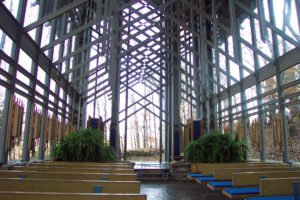
Technology is not always a physical presence in the finished building. Some of a project’s most significant technologies are the processes employed to construct the building, only leaving their traces in the finished building. The most important technological decisions to make about exposed concrete is the means used to construct the formwork. The technologies employed completely determine our experience of the concrete, but it is an impossibility for that technology to be present when we experience the concrete.
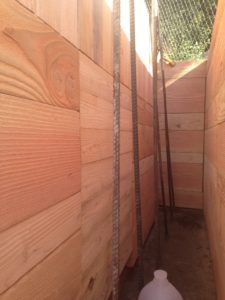
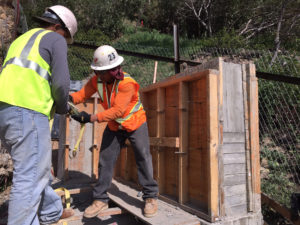
Design
Technology is always going to be employed in the creation of buildings whether or not it is purposely used with intention by the architect. Architecture is necessarily an expression of a building creator’s attitudes toward how technology merges with life. Architecture can express that technology’s intersection with life is mostly intentional or accidental; is integrated or is overwhelming; provides opportunities or is limiting. The architect makes decisions regarding the use and expression of technology that determine whether the employed technology enhances or detracts from the architecture – whether or not technology works for or against the architectural agenda. Not making proactive decisions about how architecture integrates technology into life is a decision in itself to let technology intrude without intention and act as if we do not have control over the intrusion. We make decisions that either treat technology as an end in itself or use technology in the service of a greater purpose. We make decisions that determine if technology makes architecture and life better or overwhelms life.
mills studio’s architectural agenda includes expressing a specific relationship between technology and buildings and between technology and society. Technology should not be used for its own sake but evaluated for both its service to the architecture and the user. Technology should integrate to such an extent that it both disappears and is forgotten as a separate entity. Technology should offer possibilities without providing visual complication nor complicate a building’s use.
The state of technology at any point in time creates the context for making responsible design decisions. Technological advances make many architectural decisions responsible today when they would not have been responsible in the past. A glass house becomes responsible because of the technology now available in glazing systems, automated shading devices, automated passive cooling systems, and renewable energy. An architect’s need to make more and more architectural decisions responsible also requires industry to make technological advances.
The speed of change makes you wonder what will become of architecture.
~ Tadao AndoOperations
Technology provides us the metrics and data to both confirm if our technical design intentions are being achieved and to responsibly operate a building with minimal effort. Advances in the ability to make and document precise measurements has made much of the modern world possible and allow us to accurately evaluate if our technologies are the advancement we believe them to be. But often the amount of information generated overwhelms and paralyzes our ability to make basic decisions – information anxiety. We must assure that generating data is not an end in itself, and the data generated works toward the significant ends of making our decisions more informed and our time expenditures more productive. Data generation should relieve us of many mundane decisions and provide us with more time to devote for significant decisions. Technology and the data it helps generate should make for better decisions and not lead to an inability to make decisions.
Often a user’s most intimate contact with a building is through the smallest technological details. Our interaction with light switches, for instance, is a microcosm of our interaction with technology in general. We often think only of the most current new devices as technology, but even a toggle light switch is an advanced technology that fulfills a rather heroic purpose – to turn on and off an electric light. The fact that many of us do not think of a toggle or rocker switch as technology and rarely think twice when we use one, is evidence of the truth in Mark Weiser’s statement that “the most profound technologies are those that disappear. They weave themselves into the fabric of everyday life until they are indistinguishable from it.” We know where switches are, what switch turns on and off which light, and most often use them without ever looking at them; repeated use has made their use a habit that requires very little of our attention. But this has changed with the advancements in light switch technology that now allows us to dim lights, turn lights on and off both individually and in groups, change light colors, connect lighting to other building operations like shades and music, and have lighting respond to environmental conditions. Technology first made it possible to complete a simple task, turn a light on and off, and now provides us literally unlimited options for controlling man made light to such an extent that many users are overwhelmed by the options and many wish for the return of the basic toggle or rocker switch. Turning a light on is now work when technology should lessen our burden and make many tasks mundane. To combat the potential anxiety and paralysis, light switch technology has developed in directions that have changed how we physically do or do not interact with a “light switch”. The light switch is now a GUI (Graphical User Interface). We now interact with touch screens and use our cell phone and iPads as light switches. Because we are now so comfortable with using these devices we do tasks without a second thought that we are overwhelmed by trying to do them on a wall mounted light switch. We now also supposedly have control over who has control over our lighting control. Among the most recent advancements in lighting control is removing physical contact with a “light switch” altogether by using voice controlled devices. The success of this technology will be achieved when we provide the necessary verbal instructions without realizing we have done so and the lights come on and go off without our attention. The hardware is now of no importance, but it is the software (programming) that is all important. The one time programming of a system of parameters and interactions based upon a user’s general preferences has replaced a user’s need to make individual decisions each time he wants light.
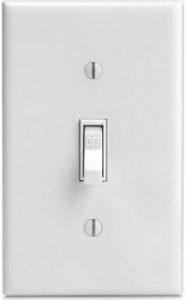
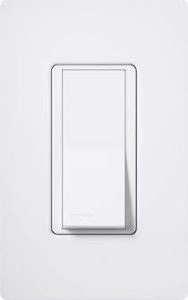


mills studio’s decision making process in specifying a light switch is a microcosm of the process required to evaluate all decisions to incorporate and integrate all technology. Firstly, we must determine if a light switch is required at all or another technology will better fulfill its purpose. Secondly, the switch must fulfill its basic purpose of turning lights on and off with minimal effort (minimal effort by both Owner and guests). Thirdly, the switch must provide for enhancements to the basic purpose and provide the user certain minimal control options over light. Fourthly, will the switch integrate sufficiently with other technologies? Fifth, will the switch adapt as circumstances and interfacing technologies change? Sixth, does the switch’s capabilities contribute to the building’s sustainability agenda? Seventh, does the design contribute to the aesthetic of the architecture and interior design? Eighth, how well does the switch design help it fulfill its basic purpose? Ninth, how well does the design help the switch fulfill its enhanced purposes? Lastly, is the switch beautiful? In short, each decision regarding technology is evaluated for whether it does or does not further the architectural agenda and how does it compare to other technologies that fulfill the same purpose. There are many technologies and devices rejected, but not because they are not great innovative technologies.
For both good and bad technological devices are now more integrated into how we live our lives than architecture, furniture, and art. Thus, the visual and aesthetic qualities of technology and technological devices now affect the aesthetics of architecture as much as furniture and art. Screens and devices of one type or another now dominate our interior landscape. The design of these devices helps make them addictive and intuitive to use – it is design for the information age. It can be argued that the design of Graphical User Interfaces is now equally as important as Interior Design for a building user’s experience of a building. Design has the power to make technology accessible and thus useful, but it also has the power to make technology an aesthetic experience.
We often attribute characteristics of morality to technology which can cloud our evaluation and use of technology. Technology is amoral and can be evaluated as good or bad only through how and toward what ends we use it. As artist Carlos Cruz-Diez says, “technology does not seek out the truth. But it does run parallel to art and science, providing the means for achieving and materializing the new truths that artists, scientists, and society in general put into play.” As Cruz-Diez says, technology is our accomplice.


The most profound technologies are those that disappear. They weave themselves into the fabric of everyday life until they are indistinguishable from it.
~ Mark Weiser
